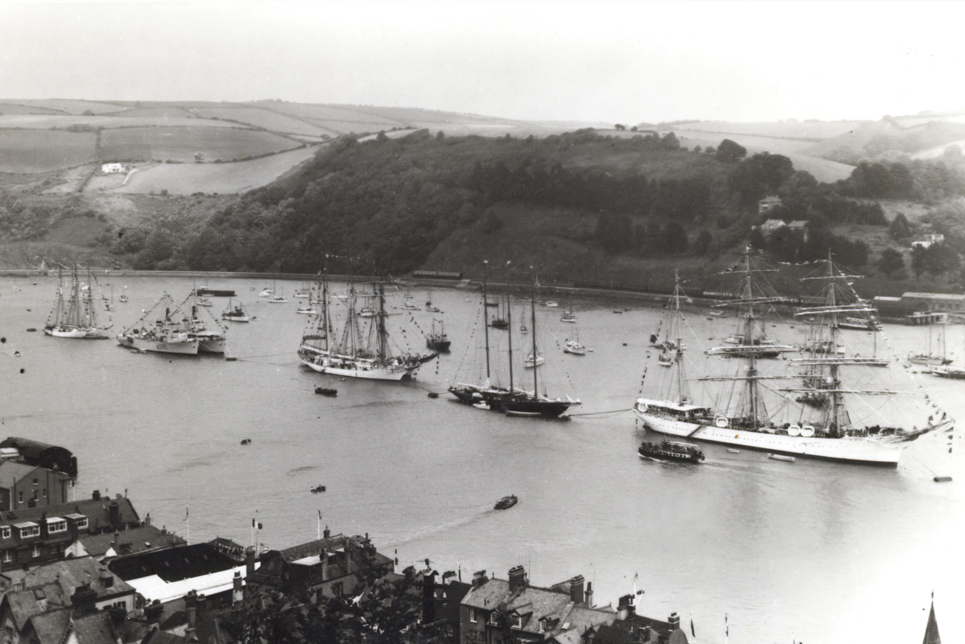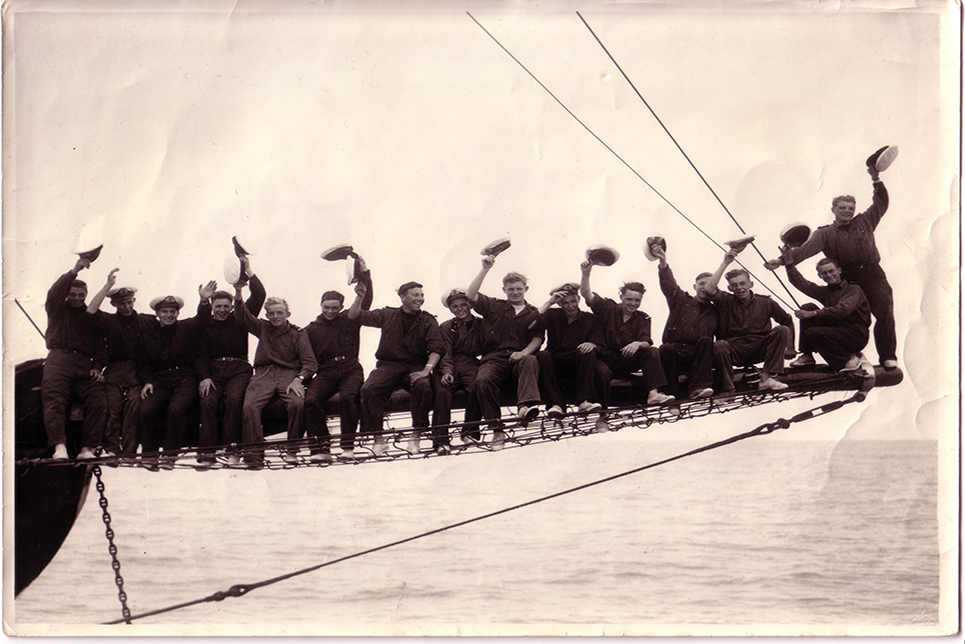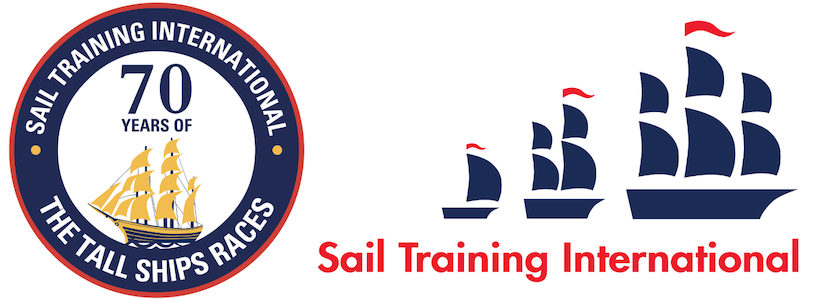In 1956, the first race of the sail training Tall Ships took place from Torbay, UK to Lisbon, Portugal, and it was organised by the Sail Training International Race Committee (STRC)…
Sail Training International
History

It was supposed to be a celebration of the world’s remaining magnificent Class A Tall Ships – everyone thought they were close to retirement. But things didn’t quite go as everyone expected… in the best way possible.
The event was so incredibly popular that STRC decided to make it biennial. They wanted to encourage friendly rivalry amongst seafaring young people, while giving them the opportunity to develop themselves through sail training.
During these early days, the UK’s Duke of Edinburgh became a Patron. As a result, a new association was born: the Sail Training Association (STA). STA organised a number of successful races – with as many as six square-riggers and up to 27 smaller vessels entering.
The modern Sail Training International (STI) was formed in early 2002, and we were granted charitable status the following year. The original team was made up from the directors and members of the International Committee of the International Sail Training Association (ISTA).
Previously, the original STRC had become ISTA – it had continued to organise the Tall Ships Races in Europe since its beginnings in 1956. In late 2002, we acquired ISTA’s assets, including its fantastic people and exciting host port contacts.
-
1956
The first Tall Ships race took place.
-
1964
The division of the fleet into Class A and B was introduced.
-
1967
STA successfully organised a series of popular races with an international fleet. It also provided sail training for 78 young people every fortnight, from March-November.
-
1968
The “Rule of Rating” was introduced to give every competing vessel an equal chance.
-
1972
The “crew interchange” idea was introduced. Essentially, this involves changing around several crews to mix nationalities from different sized vessels.
-
1972
Cutty Sark Scots Whisky started sponsoring the Races.
-
1972
The American Sail Training Association (ASTA) was created.
-
1973
The Races grow internationally, with the USSR entering its first vessels.
-
1976
More elaborate Races begin. This year, it started in Plymouth, UK and finished in New York, with races to the Canaries and Bermuda.
-
1978
The ASTA affiliated itself with STA, inspired by its ethos. It began organising annual races in North and South American waters.
-
1980
VHF radios were introduced as a compulsory piece of equipment. This improved safety and allowed the organising race team to keep in contact with competitors. It was also an incentive for trainees, as they were now able to track the position of their rivals.
Over the next few years, the sail training community continued to grow. The fleet sizes increased and the crew interchanges became more and more popular.
-
1989
145 sail training ships gathered in London, and 120 of these went on to race.
-
1992
The Columbus Regatta set a new record. A total of 32 Class As and around 160 ships set off from Cádiz, Spain to San Juan, Puerto Rico.
-
1996
This year marked the 50th anniversary of the first Tall Ships Race. A number of the vessels that had taken part in the very first race joined the fleet again.
-
2002
Sail Training International (STI) was founded.
-
2002
Cutty Sark Scots Whisky stopped sponsoring the Tall Ships Races.
-
2003
STI was awarded charitable status.
-
2007
STI was nominated for a Nobel Peace Prize.
-
2013
The Tall Ships Races has acquired a fleet of loyal vessels, which compete as often as they can. More than 100 vessels took part in this race, with around 10,000 trainees on board. Around five million spectators visited the four ports: Aarhus, Helsinki, Riga, and Szczecin.
-
2016
STI launches Sail On Board, a website dedicated to promoting sail training to young people.

The idea of an international race for sail training ships, manned by crews drawn from cadets and seamen under training, was first discussed informally in 1953. Retired London Solicitor, Bernard Morgan, had the dream of seeing a Brotherhood of the Sea, which would bring together the youth of the world’s seafaring people in friendly competition. He believed this would be a fitting way to mark what was considered to be the end of the age of sail. The idea found particular favour with the Portuguese Ambassador to the UK, Dr Pedro Theotónio Pereira, who believed that a race could foster good relations and understanding between young people of different countries.
The more Morgan and Pereira talked about the idea, the more sympathetic ears they found, firing the imaginations of many, including in Britain Earl Mountbatten, the First Sea Lord, and His Royal Highness the Duke of Edinburgh. The Sail Training International Race Committee was established and plans were made for a race between Torbay in the UK and Lisbon in Portugal in July 1956.
Twenty vessels took part in that first race, divided into two classes, those over 100 tons and those under.
The over 100 tons were: Moyana (UK), Christian Radich (Norway), Ruyam (Turkey), Falken (Sweden), Maybe (Netherlands), Gladan (Sweden), Flying Clipper (Sweden), Creole (UK), Sørlandet (Norway), Georg Stage (Denmark), Sagres (Portugal), Mercator (Belgium).
The ships under 100 tons were: Artica II (Italy), Juana (Argentina), Sereine (France), Marabu (UK), Bellatrix (Portugal), Theodora (UK), Provident (UK) and Berenice (UK).
The Argentinean yacht Juana was the first across the finishing line, but on corrected time – racing systems were around even then – the British Moyana was the winner overall, beating the Norwegian Christian Radich into second place.
Disaster struck on the way back to Southampton, however, when Moyana got into difficulties in a storm and sank. All 23 officers and crew were taken off safely and they even had the presence of mind to take their winning trophy off with them!
That first race was only planned to be a one-off, but it attracted such huge press coverage, particularly in the countries of the vessels taking part, that the Committee decided to repeat the event in 1958 and thereafter every second year. So the Sail Training International Race Committee became a permanent body, changing over the years through its incarnations as STA, ISTA and finally back to its roots as Sail Training International today.
The race series typically attracts 70-100 sail training vessels, providing an opportunity for the young trainee crews to mix with their contemporaries from other nations and visit new communities. The Tall Ships Races are held every summer in European waters, from the Baltic to the Mediterranean.
The Races usually comprise four ports with a race between port one and two, a social Cruise-in-Company between Ports two and three and a second race between ports three and four. Each port organises a programme of social, sports and cultural events and activities for the trainee crews. The final day in port includes a crew parade through the streets and a prize-giving. The arrival of the ships, berthing, undocking and the Parade of Sail are all handled by each port’s harbourmaster, while a system of volunteer liaison officers, organised by local people, look after each vessel and its crew.
Relive The Tall Ships Races 2025
Use YB satellite tracking to relive all the action during The Tall Ships Races 2025...

